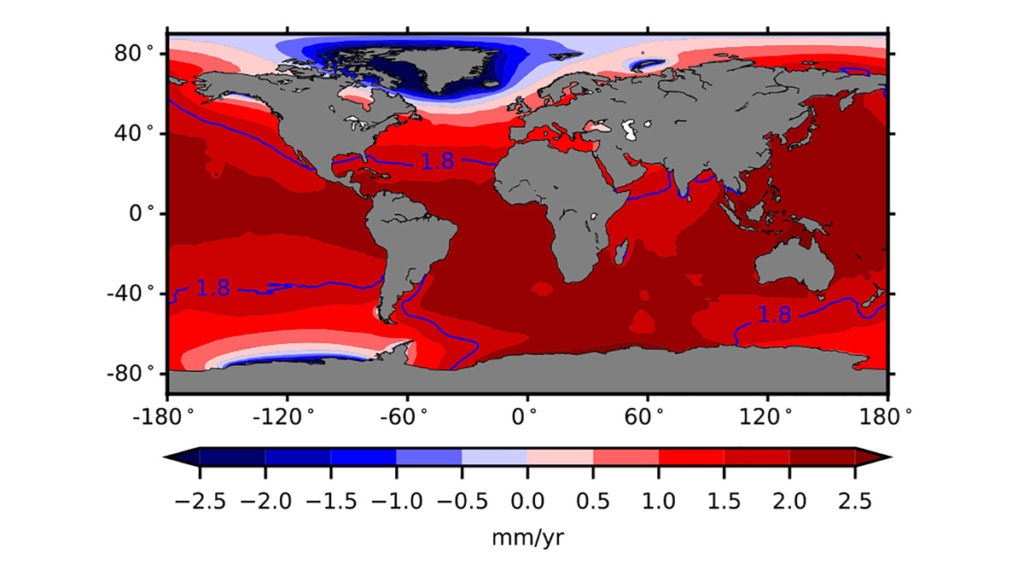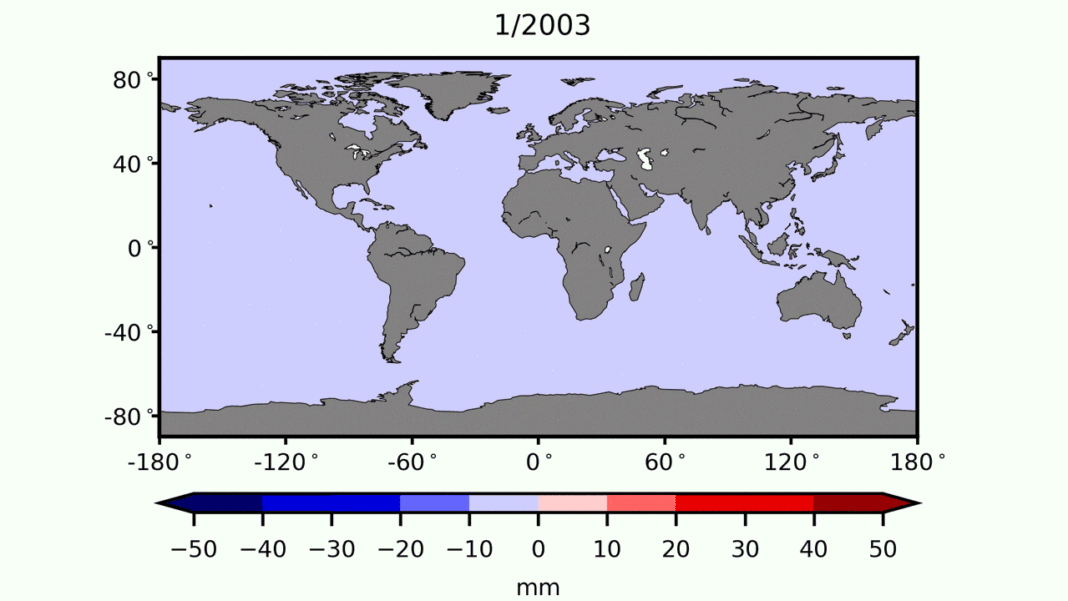The first ever sea level fingerprints have been detected this week by researchers at NASA’s Jet Propulsion Laboratory and the University of California. These so-called fingerprints are effectively detectable patterns of sea levels that vary depending on where in the world they’re located. They’re a result of the varying changes in water storage on the planet due to the melting of the ice sheets. Measuring these patterns will enable scientists to predict at what points the sea level will rise due to the melting of the glaciers.

Sea level rise fingerprints calculated from observations of mass changes in Greenland, Antarctica
Sea level fingerprints (patterns of variation in sea level rise) calculated from GRACE satellite observations
Sea level rises fingerprints calculated from observations of mass changes in Greenland, Antarctica, continental glaciers and ice caps, and land water storage made by the GRACE satellites, January 2003 to April 2014. Credit: NASA/UCI
Sea level changes are different around the globe, which is due to the altered state of the Earth’s gravity field caused by the melting of ice sheets and glaciers. The gravitational attraction of a glacier is reduced when it loses ice mass. Nearby waters drift away and cause a rapid rise in sea level known as a sea level fingerprint.
Different areas are affected differently by the rise in sea level, with regions in the Earth’s middle generally taking the worst of it. For example, the rise in sea level in California and Florida that’s caused by the melting of the ice caps is more than 50 percent greater than the average effect it has on the remainder of the world.
In order to effectively calculate these sea level fingerprints, the team used data that had been collected during April 2002 and October 2014 by the twin satellites of the U.S. / German Gravity Recovery and Climate Experiment (GRACE). The researchers discovered that during that time the total loss of mass from land ice and changes in land water storage rose dramatically by around 0.7 inches (1.8 millimeters) per year. From that, they found there was a staggering 43 percent increased water mass from Greenland, around 30 percent of mountain glaciers, and around 16 percent from Antarctica.
“Scientists have a solid understanding of the physics of sea level fingerprints, but we’ve never had a direct detection of the phenomenon until now,” said Isabella Velicogna, co-author of the study and UCI professor of Earth science system and JPL research scientist.
More News to Read
- Are We Being Observed From Outer Space?
- Astronomers Break Record in Gathering Magnetic Information for Most Distant Galaxy
- New Smart Mat Measures Temperature to Detect Foot Ulcers in People with Diabetes
- Physicists Create Quantum Memory Capable of Storing Photons
- NASA’s Solar Dynamics Observatory Captures Images of Two Fantastic Solar Flares











